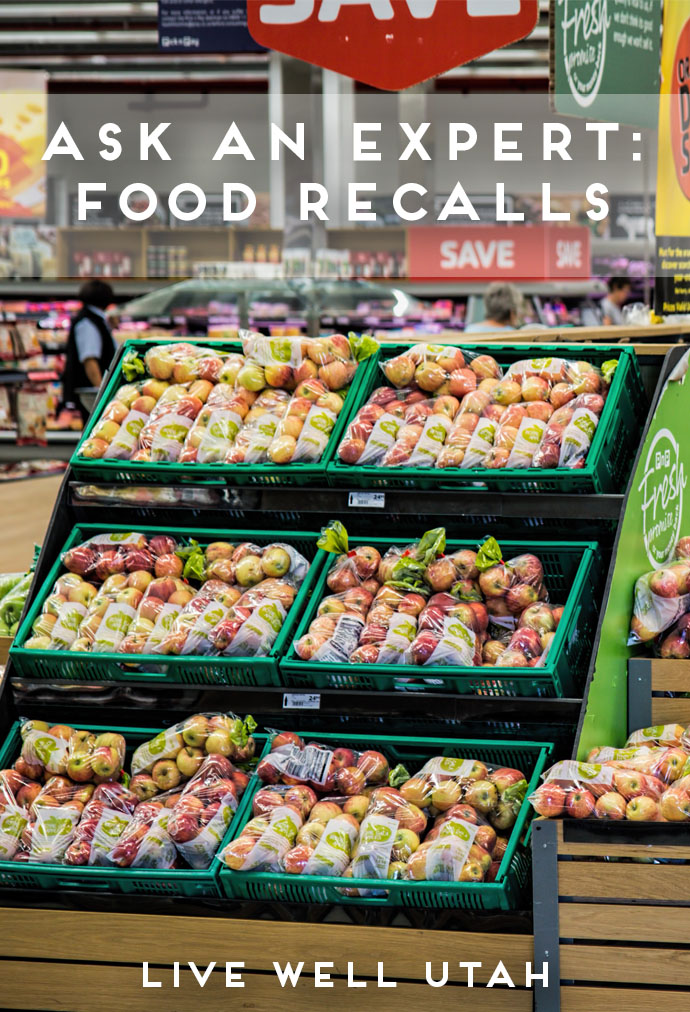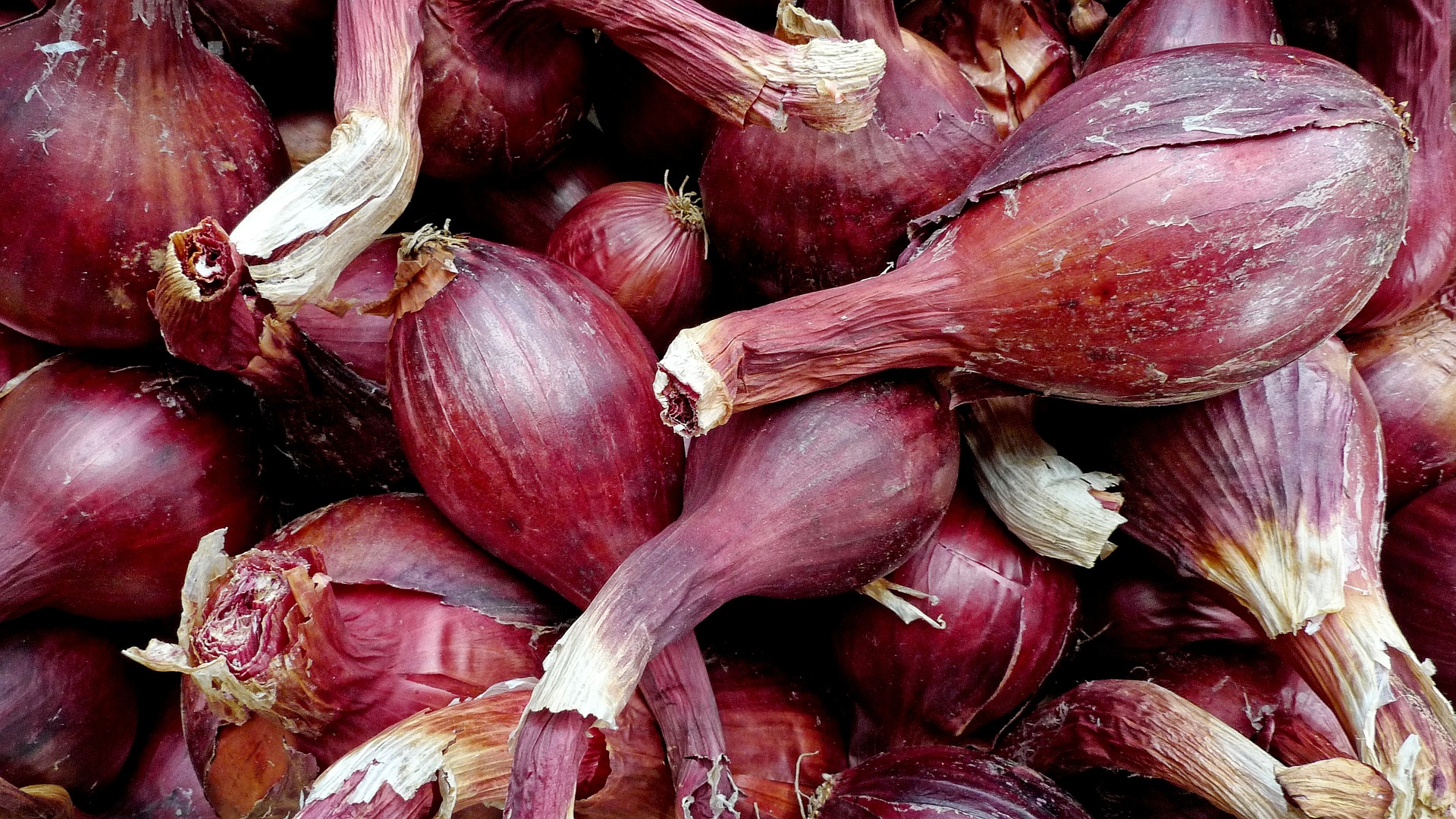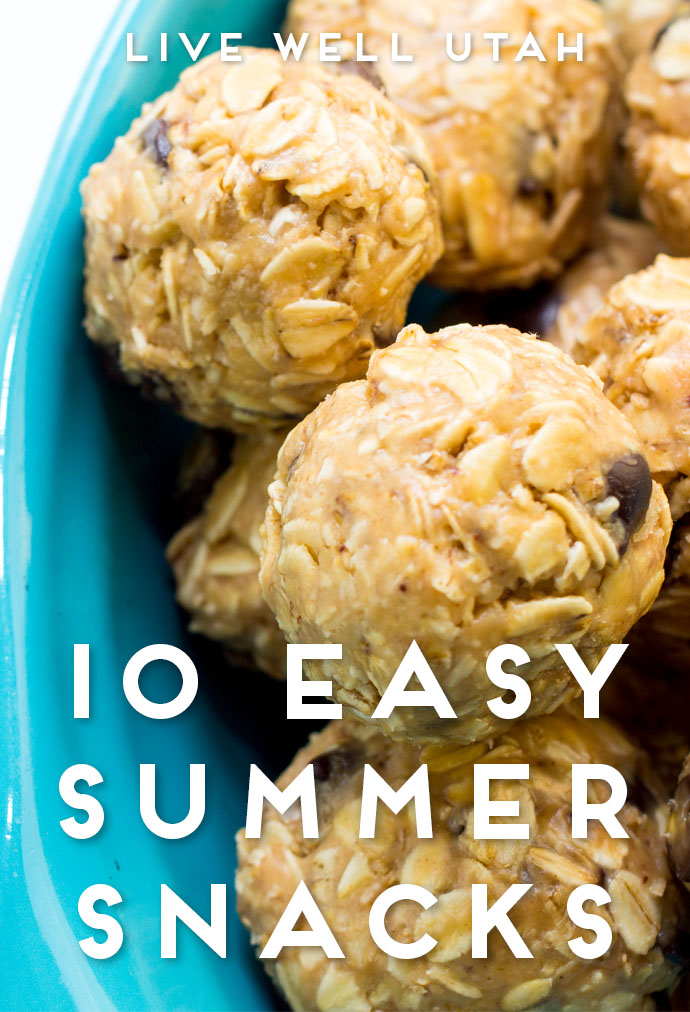How to Live a More Balanced Life
Are you striving to find better balance in your life for the new year? Try these five tips from USU Extension associate professor and relationship expert Naomi Brower.
Are you striving to find better balance in your life for the new year? Try these five tips from USU Extension associate professor and relationship expert Naomi Brower.
 Thanksgiving, Christmas, Hanukkah, New Year’s… holidays bring family, food, and irregular but expected costs. Find out how to protect your budget against these holiday costs in this video from @famfinpro Amanda Christensen.
Thanksgiving, Christmas, Hanukkah, New Year’s… holidays bring family, food, and irregular but expected costs. Find out how to protect your budget against these holiday costs in this video from @famfinpro Amanda Christensen.

Achieving a happy life full of meaning takes conscious effort. Choose and implement some, or all, of these factors to positively affect your sense of well-being and that of your children.
If someone asks how you are doing, do you respond with the typical fine or pretty good? Or are you tempted to give a list of complaints? John Paul Murphy, former Utah State University Extension 4-H specialist, had a standard answer to that question, whether he was dealing with a personal health issue or was actually having a good day. His response? “I’m terrific! But things are looking up!”
Martin Seligman, a leading professor and pioneer in the world of positive psychology, explains that our well-being, or how we are doing, is heavily influenced by five factors. These factors are outlined in, “Strong Parents, Stable Children: Building Protective Factors to Strengthen Families,” a curriculum sponsored, in part, by USU Extension.
To foster this sense of well-being in your children, consider applying “Make Time for 9!” in your relationships with them, also taken from the “Strong Parents, Stable Children” curriculum.
No single interaction requires much time, but it is important to slow down, look children in the eyes and talk or ask each other questions.
This article was written by Kathleen Riggs, Utah State University Extension professor, Iron County, 435-586-8132, kathleen.riggs@usu.edu

The elm seed bug has been recognized as Utah’s newest pest. It was first discovered in Utah in July 2014 and confirmed by the Utah State University Extension Utah Plant Pest Diagnostic Lab and the U.S. Department of Agriculture, Animal and Plant Health Inspection Service. The elm seed bug has now been widely reported along the Wasatch Front, Cache County, east to Duchesne County, west to Tooele County and south to Grand County.
“We have received an abundance of calls about this pest over the last few weeks,” said Ryan Davis, USU Extension arthropod diagnostician. “People want to know what this pest is and how to keep it from coming into their homes.”
Davis said adult elm seed bugs are about 1/3-inch long with dark, rusty-red and black coloring. They feed primarily on elm seeds and leaves. Similar to the boxelder bug, elm seed bugs enter homes and buildings in large numbers. However, unlike boxelder bugs, whose peak nuisance time is in the fall and spring, the peak nuisance time of elm seed bugs is during the hottest days of summer, about mid-June through August.
“Be aware that elm seed bugs can emit a pungent odor from scent glands, similar to bitter almonds, and they will leave unsightly fecal spots behind,” he said. “When many of them are gathered indoors, they will even land and crawl on people, but they are not considered a health threat.”
Davis said elm seed bugs enter structures through cracks and crevices, but most commonly through windows and doors. Any gap in weather stripping in a window or door is an open invitation. New windows, and even picture windows, are susceptible to elm seed bug entry.
Tips for keeping the pests outside include caulking foundation cracks and gaps in soffits and around plumbing, gas or electrical conduits; sealing windows and doors with sealant or weather stripping; and making sure all screens fit tightly. In addition, vacuuming the bugs is effective. Be sure to dispose of or freeze the vacuum bags before reuse. If using a vacuum with a hose extension, insert a knee-high nylon stocking into the hose end and secure the open end around the hose end with a rubber band. Vacuum elm seed bugs, then remove the stocking with the bugs, tie it shut and throw it away. Keep in mind that this method may cause elm seed bugs to emit their foul-smelling odor. For larger-scale exterior vacuuming, fill a wet-dry vac with approximately 1 inch of water and a dash of dish soap to drown the bugs.
Davis said residual pyrethroid insecticides can help reduce elm seed bug entry when applied around the foundation, windows, doors and to the undersides of eaves, but complete control will be difficult. Products commonly labeled for these application sites contain active ingredients such as beta-cyfluthrin, bifenthrin, deltamethrin, cyfluthrin, cypermethrin, lambda-cyhalothrin and permethrin. Be sure the intended target site is listed on the product label.
“It will be interesting to see how the elm seed bug saga plays out in Utah,” Davis said. “Hopefully its presence as a nuisance pest will moderate, but only time will tell. Until then, Utahns now have to deal with boxelder bugs in the spring and fall, and elm seed bugs during the summer. Compared to boxelder bugs, however, elm seed bugs are smaller, more difficult to keep out of homes and structures and they emit a foul-smelling odor from their scent glands. If these pests have been a problem in your home, it is worth the effort to try and exclude them for the long-term.”
Contact: Ryan Davis, 435-797-2435, ryan.davis@usu.edu
Writer: Julene Reese, 435-757-6418, julene.reese@usu.edu
 Draw the short straw on family reunion assignments and are suddenly faced with preparing food for the multitudes? Here are some tips from USU Extension family and consumer sciences faculty to help ease the pain.
Draw the short straw on family reunion assignments and are suddenly faced with preparing food for the multitudes? Here are some tips from USU Extension family and consumer sciences faculty to help ease the pain.
Be cautious and observant. Whether at a buffet-style luncheon, a family, community or church dinner or a picnic, just be cautious up front. Do a cursory review of what food is available and how it is being kept hot or cold. Ask yourself, “Does the food look fresh?” “Do I trust that the person preparing the food had clean hands and avoided cross-contamination with raw meats or juices?” “Has the food been held at a safe temperature?”
–Kathleen Riggs, Iron County
I make sure all food is well chilled and packed in a cooler if I’m traveling. Rather than mixing everything together and trying to keep a large container cold, I keep individual ingredients for a salad packaged separately to keep them cold. I pack the dressing separately, then combine it all in a large bowl when I arrive. I make desserts that are not temperature sensitive, such as brownies without frosting (I just sprinkle powdered sugar on top), Rice Krispy treats, cookies or fresh fruit with a fun dip. With meat to be served cold, I keep it well chilled. If keeping it hot, I use a crockpot or a casserole container that can be placed in an insulated bag. Dutch oven meat, vegetables and desserts are a favorite, and since they are generally cooked on site, there is no worry about the food sitting in the danger zone too long.
–Marilyn Albertson, Salt Lake County
Make sure hot food stays hot and cold food stays cold. Place bowls of ice or ice water under salads, etc., and use heat packs or slow cookers for the hot stuff. Make sure food gets put away quickly. That’s a thing in my family that worries me–we all wander away and leave the food out. When making food ahead of time, don’t put super-hot foods in the fridge to cool when they are in very large bowls or pots. Separate for faster and consistent cooling.
–Melanie Jewkes, Salt Lake County
Don’t use home-canned potatoes in your potato salad, or in your funeral potatoes, for that matter, unless you want them to live up to their name…
Even if you’re boiling or (otherwise cooking) whole potatoes the night before and plan to finish prep the next day, make sure they’re properly cooled and then refrigerated until you use them. When we talk about C. bot requiring an anaerobic environment, remember that includes microenvironments.
–Karin Allen, USU Extension Food Quality and Entrepreneurship Specialist
One last food safety tip from the USDA: Use a Meat Thermometer!
Meal-in-a-bag — Pre-bag the entire meal for each person, and they can eat right out of the bag with no fuss or mess. This works well for something like taco salad. You can also put raw ingredients, like omelet fixings, in a bag and then cook the bag in boiling water. The meal is already served out and people just need to pick a bag.
–Ginger Hack, Juab County
You have to have homemade root beer with dry ice.
If serving homemade ice cream, let family members twist the hand crank ice cream freezer or roll the ice cream in a can or bag. You will need a #10 can with a tight-fitting lid. Inside that, place a smaller can with a tight-fitting lid filled with the ice cream mixture. Add ice and rock salt and put the lid on and tape it with duct tape. Then roll it on the cement if it is in a shady place (sunny, hot concrete will slow freezing) or in the grass for about 15 minutes. Take lid off, take off lid of small can and stir down ice crystals and repeat the process until ice cream is firm.
–Marilyn Albertson, Salt Lake County
Buy food in amounts that are easy to handle. It may be cheaper to buy a 20-pound chub of ground beef, but have you ever tried to defrost 20 pounds of ground beef in order to use 5 pounds for the taco salad that night?
Have a sign-up sheet — everyone eats so everyone helps! You make the menus, you buy the food, you provide the recipes, but the point-of-contact labor force is the whole reunion population.
Keep the menus very, very simple. It doesn’t mean it has to taste bad, just that it has to have universal appeal. Meals like Hawaiian haystacks where people have an array of topping choices to put on rice make life easy. Rice will feed everyone, and people can choose what they would like to add to it.
–Cathy Merrill, Utah County
From a health perspective–do less salads that are mayo based. They often separate in the summer heat, anyway, and there are way too many delicious veggie dishes to try out (my favorite is a black bean, corn, avocado salsa made with more tomatoes and peppers and raw tomatillos…yummy!). I don’t have a recipe typed up–I change it up each time I make it based on what I have from my garden. This one is very similar to what I start with, But l always add more tomatoes, more peppers, and usually tomatillos and avocados if I have them:
Ingredients:
Directions:
Mix olive oil, red wine vinegar, lemon juice, salt and pepper in a small bowl and set aside. Combine all other ingredients and pour liquid mixture over and stir. Chill or serve immediately.
–Melanie Jewkes, Salt Lake County
There you have it, folks! Tips from family and consumer sciences faculty from around the state. Obviously, what worries us most is KEEP YOUR FOOD SAFE! Don’t let a reunion memory of a fantastic family meal be spoiled by a food-borne illness report to the Centers for Disease Control afterward!
This article was compiled and edited by Cathy Merrill, FCS Utah County
 What do you really need to know about food recalls? Find out what they really mean, what to do if you have a recalled product in your pantry or fridge, and how to keep your family safe from food-borne illnesses.
What do you really need to know about food recalls? Find out what they really mean, what to do if you have a recalled product in your pantry or fridge, and how to keep your family safe from food-borne illnesses.
Not to worry! These recalls ensure our national food supply continues to be the safest in the world. To put it into perspective: There was a massive cheese recall in February of 2017, of cheeses made in a plant that tested positive for Listeria monocytogenes. The recall affected all cheeses produced in the plant from November 10, 2016, through February 9, 2017.
Roughly 3,640,000 pounds were recalled. However, nearly a BILLION pounds of cheese is produced in the United States per month. So, out of the 3 billion pounds of cheese produced during the same time period, only 0.1% (or, 0.001213) of the cheese was recalled.
Our government takes food safety very seriously. Manufacturing plants have long lists of “Critical Control Points.” These are steps in the manufacturing process where a specified time and temperature must be regulated. They are checked frequently. Batches of foods are labeled for tracking, and records are kept as to what batches went where in the world and nation. Quality assurance scientists have chemical tests to run on each batch to ensure safe food. When a recall does occur, there are records that trace the entire physical pathway of the food product so the “bad” food can be found.
Be aware of recalls. If it is something you typically purchase, check your pantry and throw away or return the product.
Practice basic, practical food safety: clean, separate, cook & chill.
So, what should you “recall” about food recalls? That we have government regulations protecting us, and companies doing their best to follow the law and ensure their product is safe!
By: Cathy A. Merrill, FCS Assistant Professor, USU Extension, Utah County
References:
Thielking, M. (2017, March 9). Why is so much cheese being recalled? Stat. Retrieved from: https://www.statnews.com/2017/03/09/cheese-recall-sargento-indiana/
Barry-Jester, A.M. (2016, April 12). The US produces about a billion pounds of cheese every month. The Digest. Retrieved from: https://fivethirtyeight.com/features/the-u-s-produces-about-a-billion-pounds-of-cheese-every-month/
White-Cason, J. (2013, August 12). Understanding Food Recalls: The Recall Process Explained. Food Safety News. Retrieved from: http://www.foodsafetynews.com/

Worried about how your pets will react to the sight and sound of fireworks? Try these tips to keep them safe and calm.
No Fourth of July would be complete without a fireworks display. But pets often don’t find the noise, blasts and flashing lights associated with fireworks fun or entertaining. With fireworks going off in Utah throughout the month of July, pets are bound to get stressed and anxious. Karl Hoopes and Allison Willoughby, faculty in the Utah State University School of Veterinary Medicine, shared tips to help owners keep their pets safe and make the summer more enjoyable for everyone.
Both Hoopes and Willoughby emphasized the importance of keeping pets in an area they are familiar with and where they can’t hear the fireworks.
“If your dog is mildly nervous, just keeping them in a safe area is easiest and safest,” Willoughby said. “Feeling ‘safe’ to your dog may be a cool basement or lower level family room with a fan blowing to dampen the noise.”
Hoopes said the shelter needs to be indoors where sound can be better controlled and pets can’t escape. Playing soft music or leaving the TV on can also keep them distracted and drown out the noise of the fireworks.
Special clothing, such as anxiety jackets or vests, can also be helpful in keeping animals calm. Willoughby said these jackets basically give the dog a hug by applying constant pressure, which makes them feel safer.
While dogs are usually more comfortable when their owners are nearby, giving them too much reassurance can actually have the opposite effect and make them more nervous instead of calm.
“Dogs can feel more anxious if you are telling them over and over again they are going to be okay,” Willoughby said. “They can sense your own anxiety. Try to project confidence to your dog and give them the most attention when he is calm and confident.”
Prescription medications can also be useful when it comes to helping pets feel safe. If a dog has high anxiety levels, Hoopes advised owners to plan ahead and contact their veterinarian to get a safe sedative to keep them calm.
“Every year from the Fourth of July to the 24th, people get sedatives for their dogs because they know this time period is going to be hard on them,” Hoopes said. “All they do is give them the sedative pill and let them go to sleep.”
Herbal supplements can also be beneficial in treating milder cases of anxiety. Willoughby said these supplements are available over-the-counter from pet stores or veterinarians and are safe to give over long periods of time.
Willoughby warned that people should never give prescriptions designed for humans to their pets and recommended that pet owners visit their veterinarians to find out what medication will work best for their pets.
“Don’t use human prescriptions on your animals. Some may be toxic and the dosages are different for your pets,” Willoughby said. “Your veterinarian will carefully calculate correct dosages based on your pet’s species and weight. Also, your veterinarian will know any preexisting conditions that might not allow your pet to take certain medications.”
Willoughby had some advice for cat owners as well.
“I recommend you keep your cat indoors. They are pretty good about finding a spot where they feel secure,” she said. “If they are hiding out a lot, just make sure they have access to their litter box, food and water and somewhere they can visit without feeling too vulnerable”
Even after taking all of these precautions, sometimes pets still escape. Before attending any activity or celebration, pet owners should make sure their animal’s microchip and license is up-to-date to avoid losing their furry friends.
This article was written by Aubree Thomas, aubree.thomas@usu.edu
Contacts:
Karl Hoopes, karl.hoopes@usu.edu
Allison Willoughby, allison.willoughby@usu.edu

Don’t let summer break turn into a technology marathon; try these tips to help your kids unplug and engage with something besides a screen.
In today’s world, children are exposed to vast amounts of technology. An estimated 75 percent of teenagers own a cell phone, and, not surprisingly, social media sites are their favorite places to visit. In fact, one study showed that 22 percent of teenagers log onto their favorite social media sites more than 10 times a day. Consider these tips to keep your child engaged in activities other than technology.
Children are exposed to many forms of technology each day. Parents can take a leading role in setting an example and helping them develop healthy technology habits, starting when they are young. Parents should monitor children’s devices, know the passcodes for each device and let their children know they will review what is being said or done on the devices. Parents can also make sure the privacy settings on the Internet and Facebook are set to appropriate levels. Technology should be a privilege that is earned and respected. It is best to discuss rules, expectations and consequences and be open about what your children should do when they see images or visit websites that are not appropriate.
This article was written by David Schramm, Utah State University Extension assistant professor and family life specialist, david.schramm@usu.edu, 435-797-8183
 Next time you’re at the grocery store, look for some of these interesting vegetables to incorporate into your menus. Watch the video clip for some recipe ideas, and read up on the nutritional benefits of these veggies below.
Next time you’re at the grocery store, look for some of these interesting vegetables to incorporate into your menus. Watch the video clip for some recipe ideas, and read up on the nutritional benefits of these veggies below.


Bok choy is a member of the cabbage family, and contains fiber, protein, and vitamins A and C, which are antioxidants and protect cells from damage. Try sautéing it in a skillet with hot oil and garlic until leaves are bright green and stalks are translucent.

Anise, or Fennel, is a root vegetable and also an aromatic and flavorful herb in the same family as carrots and parsley. It continues fiber, some protein, vitamins A, C and E, potassium, zinc, and beta-carotene.
Preheat the oven to 375 degrees F.
Lightly oil bottom of a 13×9 glass baking dish. Arrange fennel in the dish. Sprinkle with salt and pepper, then with parmesan cheese. Drizzle with oil. Bake until golden brown, about 45 minutes. Chop enough fennel fronds to equal 2 tsp, then sprinkle over the roasted fennel and serve.

Kale contains protein, fiber, potassium, and vitamins A, C and B6. Try it in a massaged salad, or added into soup.
Strip leaves from the stems (discard stems). Wash and dry the leaves. Tear the leaves into small pieces and place in a large bowl. Add parmesan, oil, lemon juice, garlic, pepper, and salt. With clean hands, firmly massage and crush the greens to work in the flavoring. Stop when the volume of greens is reduced by about half. The greens should look darker and somewhat shiny. Taste and adjust seasoning with more parmesan, lemon juice, garlic, and/or pepper. To avoid mess, massage in a Ziploc bag!

Broccoflower looks like a light green cauliflower, and has a milder and sweeter flavor than either broccoli or cauliflower. It can be eaten raw or cooked. Broccoflower contains vitamins A and C, folic acid and magnesium.

Rainbow chard is a relative of the beet, with colorful stalks that resemble celery topped with dark green leaves. It contains vitamins A, C, E, and K, beta carotene, calcium, and potassium. Prepare the leaves as you would spinach, and the stalks as you would asparagus.

They may look different, but purple potatoes contain the same vitamin C, potassium and fiber that regular potatoes do, and can be prepared the same way.

Shallots contain more nutrients than onions, and have a milder flavor. They contain vitamins A and C, pyridoxine, folates, and thiamin.

Jicama is a root vegetable, and contains potassium, fiber, protein, and vitamin C. It should be stored on the counter, not in the fridge. Eat it with hummus or on a salad.

Beets contain antioxidants, vitamin C and B6, fiber, potassium and magnesium. Try them roasted.
Information for this article was contributed by Jaqueline Neid-Avila, RDN, CD with USU Extension in Davis County
 Skip the pre-packaged unhealthy snacks, and try these 10 easy and nutritious summer snack ideas.
Skip the pre-packaged unhealthy snacks, and try these 10 easy and nutritious summer snack ideas.
It’s that time of year again. School is out, and kids are making plans for summer adventures – which will naturally include snacks.
Check out the 10 fun, summertime snack ideas below. Some will take a little more prep time, but once they are done, they will be easy for kids to grab out of the freezer so they can be on the way to their next adventure.
Ingredients:
Instructions:
In a medium bowl, add all of the ingredients, and stir to combine well. The mixture should be a bit sticky. Refrigerate for at least 30 minutes.
Use a spoon to scoop about a tablespoon of the cookie ball mixture into your hand. Roll into a ball. Repeat with remaining mixture.
Store the balls covered in the fridge for up to a week, or in the freezer for much longer.
So there you have it. Ten easy, fun snacks that will keep your children healthy and happy. Have a great summer, and happy snacking!
This article was written by Summer Hansen, USU Extension intern, Box Elder County
Resources: https://www.blessthismessplease.com/2017/03/8-no-bake-oatmeal-energy-balls.html?m